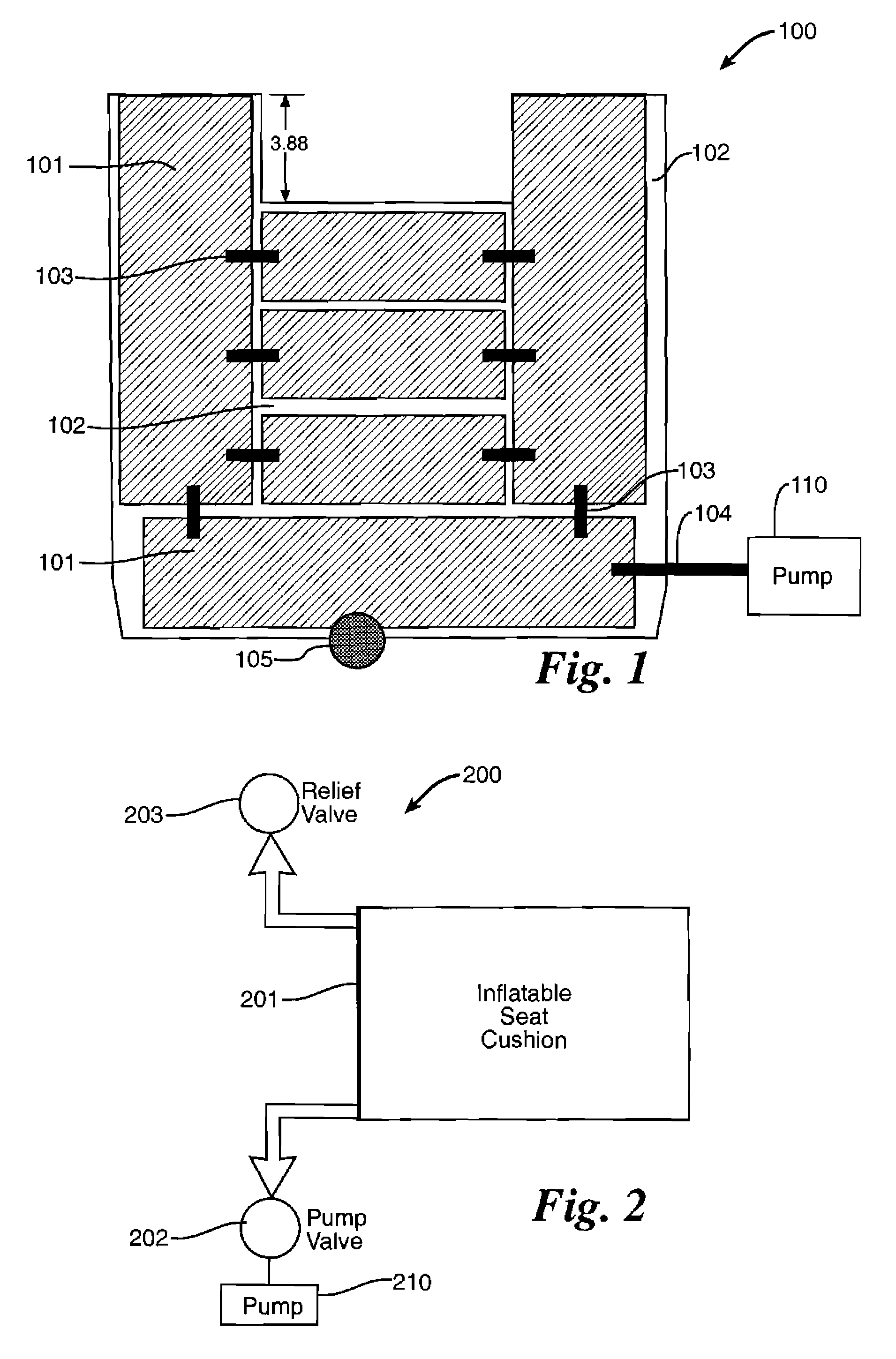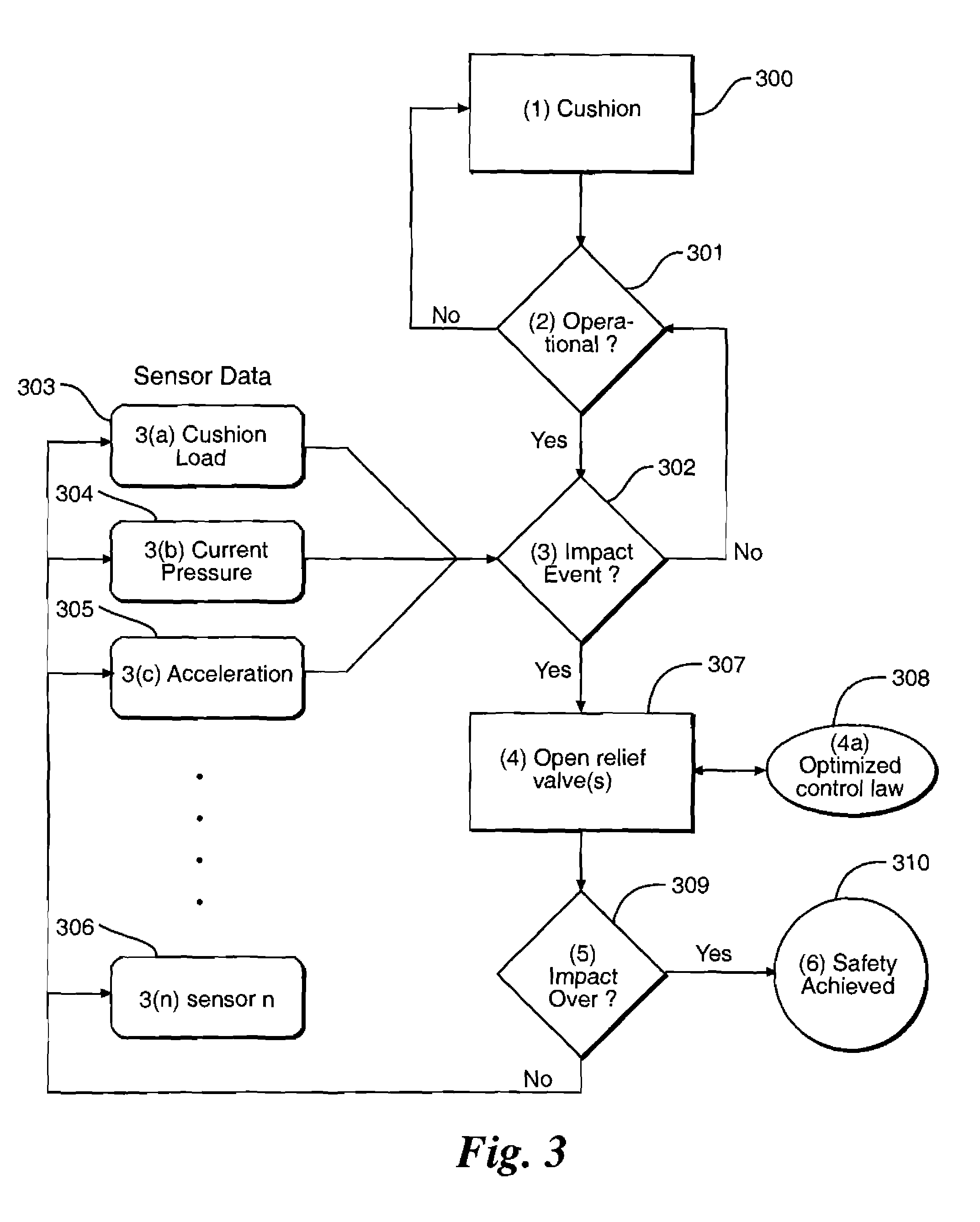Seat cushion
a seat cushion and foam technology, applied in the field of seat cushions, can solve the problems of reducing the effectiveness of foam, unable to know or predict accurately, and unable to adapt to environmental conditions, so as to optimize the amount of energy that is absorbed by the seat cushion, reduce the amount of energy, and reduce the effect of foam
- Summary
- Abstract
- Description
- Claims
- Application Information
AI Technical Summary
Benefits of technology
Problems solved by technology
Method used
Image
Examples
Embodiment Construction
[0014]The disclosed seat cushion uses a semi-active technology. Modeling work has demonstrated the utility of algorithms that can be used to optimize the mechanical properties of seat cushions during a high energy event such as an ejection or an impact by controlling the release of pressurized fluid in the seat cushions.
[0015]In one embodiment, a seat cushion 100 includes a plurality of chambers 101. Each chamber 101 may be the same size and configuration or the chambers 101 may be different sizes and configurations, as shown in FIG. 1. Each chamber 101 is wrapped inside a layer of comfort foam 102. The foam layer 102 can smooth the surface of the seat cushion 100 between the air chambers 101 to eliminate gaps that may be created by different size chambers 101. The foam layer 102 also provides a backup source of cushioning should a leak develop in one of the chambers 101. A sheepskin cover or similar material (not shown) is placed on top of the chambers 101 and the foam layer 102. I...
PUM
 Login to View More
Login to View More Abstract
Description
Claims
Application Information
 Login to View More
Login to View More - R&D
- Intellectual Property
- Life Sciences
- Materials
- Tech Scout
- Unparalleled Data Quality
- Higher Quality Content
- 60% Fewer Hallucinations
Browse by: Latest US Patents, China's latest patents, Technical Efficacy Thesaurus, Application Domain, Technology Topic, Popular Technical Reports.
© 2025 PatSnap. All rights reserved.Legal|Privacy policy|Modern Slavery Act Transparency Statement|Sitemap|About US| Contact US: help@patsnap.com



